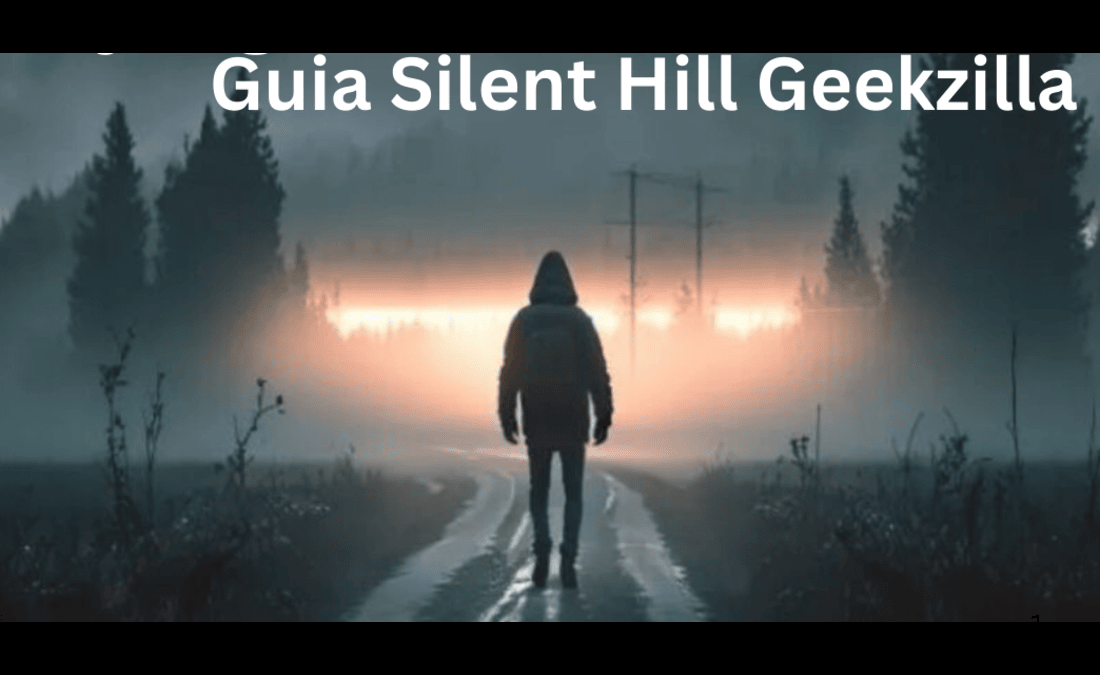The Guia Silent Hill Geekzilla series is a cornerstone of the survival horror genre. Over the years, it has amassed a dedicated fanbase that continues to appreciate its chilling atmosphere, complex narratives, and psychological horror elements. In this article, we will provide a “Guia Silent Hill Geekzilla,” a complete guide for fans and newcomers alike, exploring everything from the history of the franchise to its key characters, gameplay mechanics, and the lasting impact it has had on the gaming world. Whether you are just getting started with Silent Hill or are a seasoned fan, this guide will help you navigate the eerie and enigmatic world of Silent Hill.
1. The Origins of Silent Hill: A Brief History
The Silent Hill franchise began in 1999 with the release of the first game, “Silent Hill,” for the Sony PlayStation. Developed by Konami, the game quickly garnered attention for its innovative gameplay, unsettling atmosphere, and a story that was far more complex and psychological than many other horror games at the time. Its success led to numerous sequels, spin-offs, and adaptations across various media, including films, novels, and comics.
The “Guia Silent Hill Geekzilla” not only serves to commemorate the legacy of this iconic series but also offers insights into its roots. The success of the first game laid the foundation for the series’ evolution. The second installment, “Silent Hill 2,” is often regarded as one of the best video games of all time, further solidifying the franchise’s place in gaming history.
The Creative Minds Behind Silent Hill
Several key figures played pivotal roles in the creation of Silent Hill. Among them, Keiichiro Toyama, the director of the first game, and Akira Yamaoka, the composer, were instrumental in establishing the series’ unique identity. Toyama’s vision for a horror game that combined psychological themes with real-world fears laid the groundwork for the series’ distinct storytelling style. Yamaoka’s haunting and atmospheric music became synonymous with the series, adding another layer of depth to the game’s immersive experience.
2. Guia Silent Hill Geekzilla: Exploring the Key Games in the Series
The Silent Hill series spans multiple generations of gaming platforms, and each entry has contributed to the evolution of the series. Let’s take a closer look at the key titles in the Silent Hill franchise.
Silent Hill (1999)
The first game in the series set the tone for the franchise with its eerie, fog-covered town and the haunting story of Harry Mason searching for his missing adopted daughter, Cheryl. The game introduced the now-iconic setting of Silent Hill, a seemingly normal town that hides terrifying secrets. Players had to navigate the unsettling environment, solve puzzles, and battle grotesque monsters, all while unraveling a mysterious and disturbing narrative.
Silent Hill 2 (2001)
Often regarded as the pinnacle of the series, “Silent Hill 2” is a psychological horror masterpiece. It follows James Sunderland as he travels to Silent Hill after receiving a letter from his deceased wife, Mary. What follows is a story that explores guilt, loss, and the human psyche. The game’s deep, symbolic storytelling, along with its unforgettable twist ending, has made it a landmark in video game history.

Silent Hill 3 (2003)
Silent Hill 3 brought back the familiar atmosphere of the first game, but with a new protagonist, Heather Mason, who is revealed to be the adopted daughter of Harry Mason from the original game. Heather’s journey is a mix of personal discovery and external threats as she uncovers the dark secrets of her own past. The game expanded on the lore of Silent Hill and introduced new mechanics, including a more refined combat system and atmospheric upgrades.
Silent Hill 4: The Room (2004)
“Silent Hill 4: The Room” diverged from the traditional format, offering a new perspective. The game follows Henry Townshend, who finds himself trapped in his own apartment, which becomes a portal to otherworldly dimensions. This title is notable for its more experimental approach, blending traditional survival horror elements with more abstract and surreal storytelling.
Silent Hill: Homecoming (2008)
“Silent Hill: Homecoming” marks a shift in the series’ development, as it was created by an American team at Double Helix Games. While still retaining the series’ core elements, the game introduces a new protagonist, Alex Shepherd, who returns to his hometown of Shepherd’s Glen to uncover the mystery of his brother’s disappearance. While the game’s reception was mixed, it continued the franchise’s tradition of complex narratives and disturbing imagery.
Silent Hill: Downpour (2012)
“Silent Hill: Downpour” follows a new protagonist, Murphy Pendleton, a convict who finds himself stranded in Silent Hill. With a focus on exploration and open-world mechanics, “Downpour” aimed to breathe new life into the franchise but faced criticism for its lack of polish and inconsistent gameplay. Despite this, it still featured some of the series’ signature horror elements and deep psychological themes.
3. The Impact of Silent Hill on Gaming and Pop Culture
The “Guia Silent Hill Geekzilla” wouldn’t be complete without acknowledging the lasting impact that Silent Hill has had on both the gaming industry and pop culture as a whole. The series has influenced countless other games, films, and other forms of media.
The Influence on Other Horror Games
Silent Hill’s ability to blend psychological horror with survival elements paved the way for future horror titles, including “Fatal Frame” and “Resident Evil.” The game’s emphasis on atmosphere, psychological tension, and ambiguous narratives has been a hallmark of many contemporary survival horror titles.
The Silent Hill Films
The success of the Silent Hill video games led to a film adaptation in 2006, directed by Christophe Gans. The film attempted to capture the essence of the games, particularly the atmosphere and the strange, unsettling imagery. Though the movie received mixed reviews, it has garnered a cult following and remains a key part of the franchise’s legacy. A sequel, “Silent Hill: Revelation,” was released in 2012, though it failed to achieve the same level of success as its predecessor.
The Silent Hill Soundtrack: A Musical Legacy
One of the most iconic aspects of Silent Hill is its haunting music, composed by Akira Yamaoka. His atmospheric scores have become synonymous with the franchise, and many of the tracks are considered some of the most memorable in video game history. The music plays a crucial role in setting the tone and heightening the sense of dread and unease that defines the series.
4. Guia Silent Hill Geekzilla: Understanding the Themes and Symbolism
Silent Hill is known for its deep, often cryptic storytelling, which incorporates complex themes and symbolism. Much of the horror in the series comes from the psychological torment experienced by the protagonists, rather than overt supernatural forces. Common themes explored throughout the franchise include guilt, trauma, redemption, and the struggle between light and darkness.
The Town of Silent Hill
The town itself is a key symbol in the series. It represents a place where the characters are forced to confront their inner demons, both literally and metaphorically. The fog and otherworldly elements serve as a representation of the characters’ psyches, often reflecting their emotional or psychological states.
Psychological Horror and Personal Struggles
Many of the games in the series feature protagonists who are grappling with personal tragedies or unresolved guilt. This element of psychological horror is what sets Silent Hill apart from other survival horror games, as it dives deeper into the psyche of the characters and presents a more introspective type of terror.
Conclusion: Why Silent Hill Endures
The “Guia Silent Hill Geekzilla” serves as a tribute to one of the most influential and enduring franchises in video game history. Silent Hill has captivated audiences for over two decades with its unique blend of psychological horror, intricate storytelling, and memorable characters. Whether through its complex narratives, chilling atmosphere, or groundbreaking gameplay mechanics, Silent Hill has left an indelible mark on the horror genre and continues to influence games, films, and media to this day.
For both newcomers and longtime fans, Silent Hill remains a series that offers a rich and thought-provoking experience, filled with hidden meanings and untold horrors. The world of Silent Hill will continue to resonate with players for years to come, and the “Guia Silent Hill Geekzilla” will undoubtedly remain an essential resource for anyone seeking to understand the haunting legacy of this iconic franchise.




